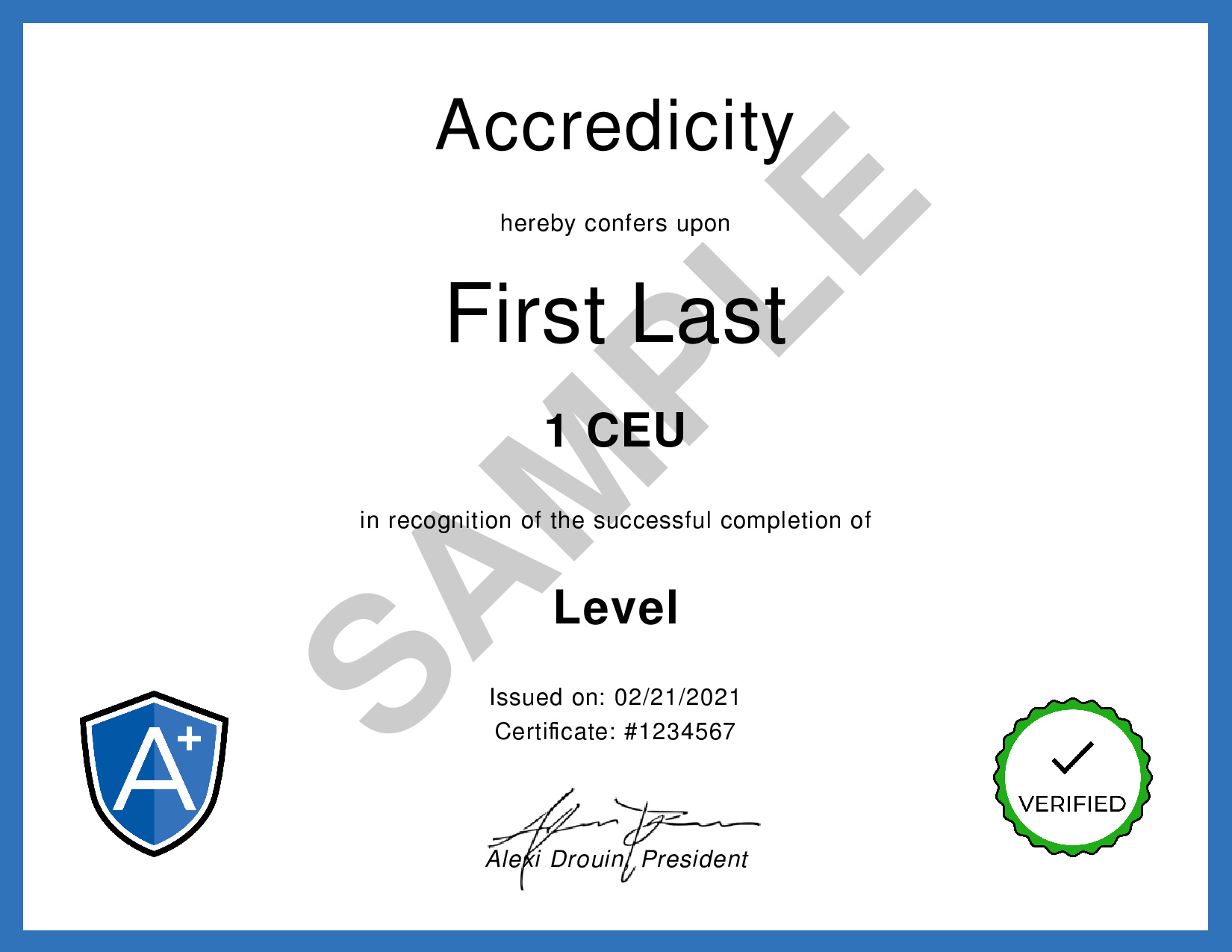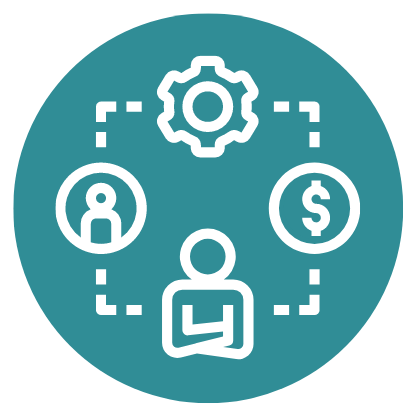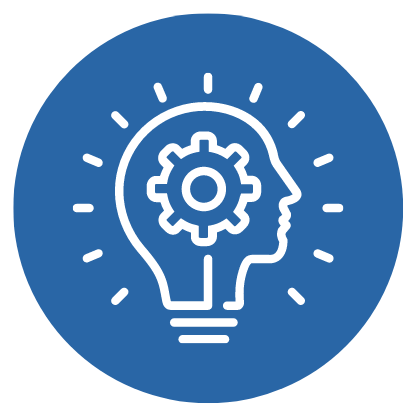Apple: The Functional Organization | HBR
Reference: Harvard Business Review. (2021, January 27). How Apple Is Organized for Innovation: The Functional Organization [Video]. YouTube.
We Make Your Education Count

Get the Credit You Deserve and Become the Most Attractive Job Candidate by Earning and Posting A+ Badges to Your Linkedin Profile.
Sign Up to Get Started at Accredicity
|
Unlock the secrets of Apple's success: Discover how its functional organization and leadership model drove innovation. Apple is renowned for its innovation in hardware, software and services, and HBR reveals the functional organization and leadership model behind it. After Steve Jobs became CEO in 1997, he laid off the general managers of all business units and put the entire company under one P&L. This single functional organization divides roles based on expertise, empowering R&D leaders to weigh the benefits to users against cost considerations. Jobs' decisions not only saved the company from bankruptcy, but established it as one of the world's most influential tech companies. Learning Outline1. Apple had a conventional structure with business units and their own profit and loss responsibilities prior to Steve Jobs' return in 1997. Instructional ContentApple is an iconic tech company known for its innovative hardware, software, and services. However, its success can be attributed to more than just the products it creates. Apple's organizational design and leadership model have been instrumental in driving innovation and transforming the company into the influential powerhouse it is today. When Steve Jobs returned to Apple in 1997, he quickly made changes to the company's conventional structure. He combined the different functional departments of the business units into one functional organization, where departments are divided based on their function. This structure ensures that those with the most expertise and experience in a particular domain have the decision rights for that domain. Additionally, Jobs put the entire company under one P&L to get rid of the general managers who stifled innovation. The functional structure Apple employs today is tailored to its need to compete in a market with high rates of technological change and disruption. It relies on the judgment and intuition of technical experts who can predict which technologies and designs are likely to succeed. Senior vice presidents at Apple are in charge of functions, not products, and the only position on the organizational chart that holds decision rights for design, engineering, operations, marketing, and retail is the CEO. For example, when the decision was made to introduce the dual lens camera with Portrait Mode in the iPhone 7 Plus, it was a risk. But, because the leaders making decisions were those with deep expertise in their areas, it was the right one. The camera was a defining feature of the phone and is an example of how the combination of Apple's organizational structure and leadership model has enabled it to offer the best possible products. In conclusion, Apple's organizational design and leadership model have played a significant role in driving its success. By putting the entire company under one P&L and implementing a functional structure, Apple has been able to rely on the judgment of technical experts and make decisions that are tailored to the needs of the market and its users. This, in turn, has enabled the company to offer the best possible products and transform itself into an influential tech powerhouse. Management
|

Apple is like a superhero team that works together to make amazing things. It’s organized like a group of experts, each responsible for different parts of creating something new, like a computer, iPhone, or iPad. When Steve Jobs took over as CEO in 1997, he made a big change to how the company was organized. Instead of having different teams for each product, he put everyone together in one “functional organization” that focused on making sure each product was the best it could be. Now, the people in charge of making Apple's products are experts who know exactly what users need and how to make the product better, instead of just worrying about costs. That’s why Apple is so successful at creating new things that everyone loves! Video Quotes1. "Simply put, a functional structure divides an organization into departments based on their function. These departments are headed by functional managers who are experts in the roles they supervise." [Speaker] 2. "It's easier to get the balance right between attention to costs and the value added to the user experience when the leaders making decisions are those with deep expertise in their areas." [Speaker] 3. “Apple's commitment to offer the best possible products would not be achieved if cost and price targets were the fixed parameters within which to make design and engineering choices.” [Speaker] Related Quotes"The functional organization is effective at making sure that the parts of the business that need to interact, do interact, and do so in an efficient way." -Tim Cook, CEO of Apple "The functional organization is the right model for Apple because of how it's organized and how it can move quickly and efficiently." -Jeff Williams, COO of Apple "We rely upon the functional organization to bring together the disciplines of engineering, product design, and marketing." -Tim Cook, CEO of Apple Competencies1. Stakeholder Management Learning Outcomes1. Remember: Identify the features of Apple's organizational design and leadership model that have enabled innovation success. Sample Answers1. Based on the video, Apple's organizational structure is a functional structure, which divides the company into departments based on their function and is headed by functional managers. This structure ensures that those with the most expertise and experience in a particular domain have the decision-making power. 2. Under Steve Jobs' leadership, Apple changed its management structure from business units with its own profit and loss responsibilities to a single P&L and a functional organization. This move allowed technical experts to make decisions based on their judgment and intuition about which technologies and designs were likely to succeed. 3. With Apple's functional organization, decisions are made by those with the most expertise in their areas and are based on value added to the user experience rather than cost and price targets. This allows Apple to offer the best possible products and helps explain the company's innovation success. HBRHBR is an international business magazine published by Harvard Business Publishing, a wholly owned subsidiary of Harvard University. HBR focuses on topics related to business management, operations, and strategy, and is read by business leaders, executives, and academics. Its articles often provide insights into the latest trends in business and explore a variety of topics such as innovation, product development, organizational culture, and leadership. In this video, HBR brings in an expert on The Functional Organization, Debra Dunn, who is a world-renowned management consultant and author. Dunn has decades of experience in organizational design and management, and is a frequent speaker at conferences and workshops. HBR Learning DesignStakeholder Management, Creativity and Innovation, and Business and Enterprise are all important competencies to have in order to be successful in management. Stakeholder Management is the ability to understand and manage the needs and expectations of stakeholders, including customers, employees and other partners. This is an important competency as it allows leaders to develop strong and productive relationships with stakeholders, which can ultimately lead to better business performance. Creativity and innovation is key to staying ahead of the competition and making sure that a business is able to provide new, innovative products and services that meet customer needs. Finally, business and enterprise are necessary for running a successful business. This includes understanding how to manage finances and resources, as well as how to maximize efficiency. AssessmentMultiple-Choice Exam Question: Q: What type of organizational structure does Apple use? Answer: B. Functional Structure Questions1. What is a functional organization and how does it differ from a conventional organizational structure? KeywordsApple Organizational Design, Functional Organization, Steve Jobs CEO, Tim Cook CEO, iPhone 7 Plus, Dual Lens Camera, Paul Hubel Senior Leader, User Experience, Technological Change, Disruption, Cost Considerations Facts1. Steve Jobs restructured Apple into a functional organization and removed general managers to enable the company to innovate. Trends1. Develop an online platform to host virtual workshops and seminars to teach companies how to adopt Apple's organizational structure and leadership model. SourceThis learning instructional guidance was formulated using the GPT-3 language model created by OpenAI. ShareApple's structure & leadership model drive its innovation success. Its functional organization ensures those with expertise & experience have decision rights. CEO Tim Cook is the only one with design, engineering, ops, marketing & retail rights. #Innovation #ProductDevelopment #Tech #Apple @Accredicity |








 65 Creds - Management
65 Creds - Management


